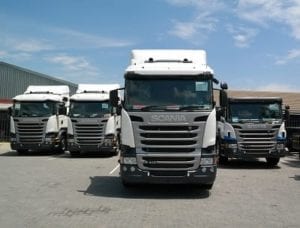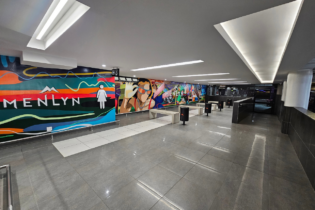Takt time is the average unit production time needed to meet customer demand. Tristan Wiggill discovers how one extra-heavy truck manufacturer is using Takt while ensuring safe assembly, quality product, and timeous delivery.
Swede Tommy Svensson, production director at Scania South Africa, explains that Takt is an aspect of real-time management (RTM) at the assembly facility in Aeroton, Johannesburg. The objective of RTM is to address assembly issues immediately so that safety, quality, and timely delivery, always in that order, are consistently achieved. It is effectively a constant improvement method that is continually being analyzed and improved upon, with a meeting held every day to track the status of Takt. Whenever a problem is found, on either of the two assembly lines, work is immediately stopped so that an intervention measure can be implemented. A short-term solution must be found quickly while a longer-term solution, which will investigate the root cause, is undertaken and followed through. The assembly plant was opened in 1995 and is used to assemble trucks and buses for local and cross-border customers. Customers are invited to watch the assembly process. Fully knocked-down components arrive at the facility from Europe or Brazil, after which they are fashioned into complete trucks and buses in single, nine-hour shifts. All vehicles made by the company, regardless of location, are made to the same standards because the company uses a standard production system, known as the Scania Production System.Using Takt within the ambit of RTM, a vehicle is completely assembled in 48 minutes, which equates to 13 units a day or 2 300 units a year. Typically, this comprises 11 trucks and two buses daily, depending on the specification of the bus (rear-engined buses take longer to assemble.) Total production capacity is 2 900 units per year, which could be reached without employing more people, investing in machinery or adding shifts.
“We strive to work smarter, not faster,” elaborates Svensson. “It is not about management giving orders to the staff and telling them what to do. We support our assemblers through training, giving them responsibility and encouragement so that they find solutions for themselves and own their space.” To this end, team leaders are appointed and given small teams to manage, teach and motivate. “Staff must have insight into what they are doing because they are the most qualified people to identify and fix problems,” he continues. “We always refer back to the ‘Scania House’, which is a metaphor for the tools and methods of production here, and around the world, and which requires competence and leadership to implement.” Continuous improvement means that the assembly facility can safely meet demands from the business unit until 2020.






